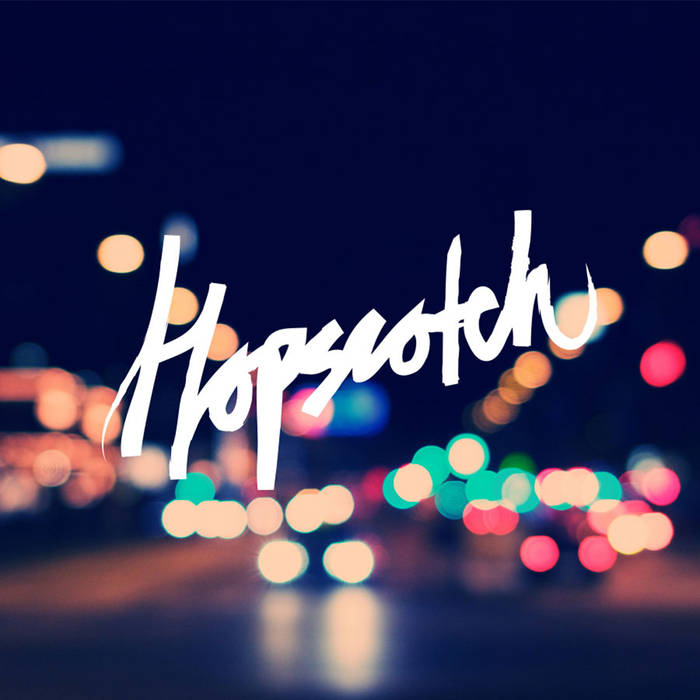-
Chapter 2 CrashRed Route - An intersection in Boyle Heights
Lucha and Jamson exchange information in the aftermath of their accident.
-
Chapter 4 Lucha's Quinceañera SongRed Route - Mariachi Plaza, Boyle Heights
Lucha remembers the day she left her childhood behind.
-
Chapter 6 Jameson PortraitYellow Route - The 2nd Street Tunnel, Downtown Los Angeles
Jameson contemplates the multifaceted nature of his personality.
-
Chapter 7 The ReunionYellow Route - A Rehearsal Studio in the Arts District
Lucha and Jameson connect at Lucha's performance of Orpheus and Eurydice.
-
Chapter 8 First KissRed Route - Hollenbeck Park, East Los Angeles
Romance blooms on Lucha and Jameson's first date.
-
Chapter 9 Angel's PointGreen Route - Angel's Point, Elysian Park
Lucha and Jameson share a passionate physical experience.
-
Chapter 11 The Floating NebulaGreen Route - The Corn Fields, Los Angeles State Historic Park, Chinatown
The metaphysical peak in Lucha and Jameson's love.
-
Chapter 12 WeddingYellow Route - City Hall, Downtown Los Angeles
On their wedding day, Lucha gives Jameson a fateful gift.
-
Chapter 14 The Phone Call, Part 1Red Route - Traversing between the Arts District and Boyle Heights
Lucha receives a mysterious phone call from a voice she seems to recognize.
-
Chapter 17 Orlando's FairwellRed Route - Evergreen Cemetery
Before leaving Los Angeles, Orlando pays his last respects to his wife.
-
Chapter 18 Interlude (Car Wash)Green Route - AirStream Trailer, Elysian Park
Reflect on the impact of a location's geography on a person's psyche.
-
Chapter 24 The Red NotebookRed Route - Utter darkness
In a state of darkness, Lucha is haunted by Jameson's red notebook.
-
Chapter 25 The Other WomanYellow Route - The Bradbury Building, Downtown Los Angeles
Still submerged in darkness, Lucha dreams of Jameson's infidelity.
-
Chapter 26 HadesGreen Route - Bowtie Parcel, Los Angeles River
Lucha descends to the underworld in search of Jameson.
-
Chapter 28 Lucha and Orlando in LoveYellow Route - Historic Core, Downtown Los Angeles
After years apart, Lucha and Orlando reunite in Los Angeles.
-
Chapter 33 Farewell From the Roof TopsRed Route - Rooftops, Toy Factory Lofts, Biscuit Lofts, Ito Building Tower, Arts District
Lucha makes peace with Jameson's disappearance.

Finale
Text by Jane Stephans Rosenthal
The Central Hub was free and open to the public. Prior to the Finale, live streams of everything happening in the cars could be viewed on independent monitors, with Sennheiser headphones allowing anyone a high-quality experience of the real-time performance.
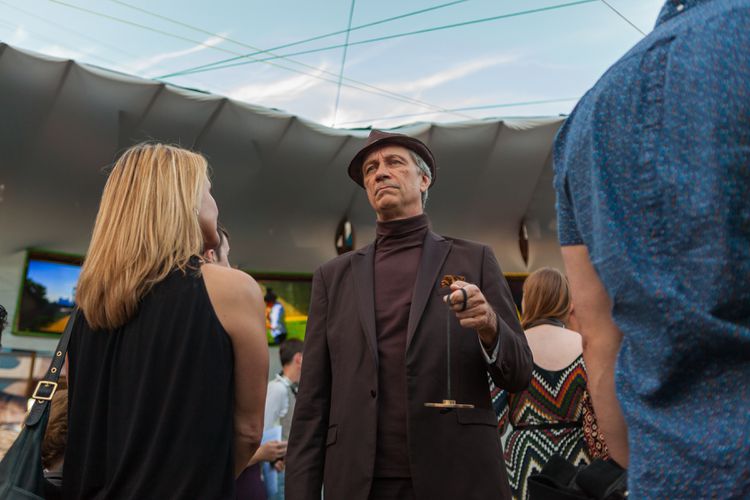


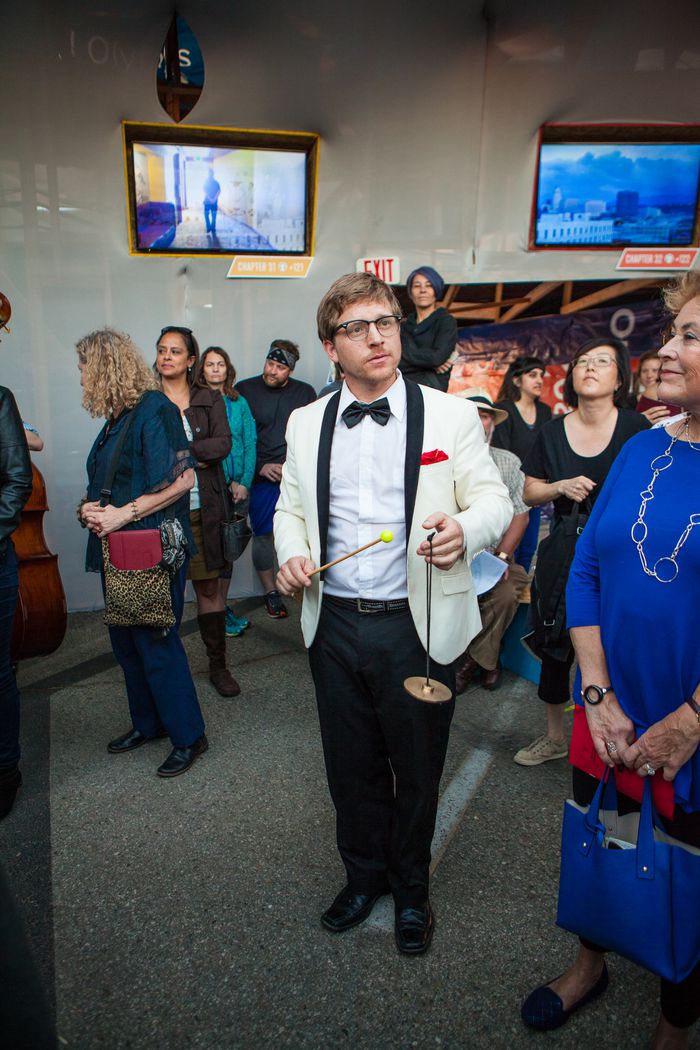
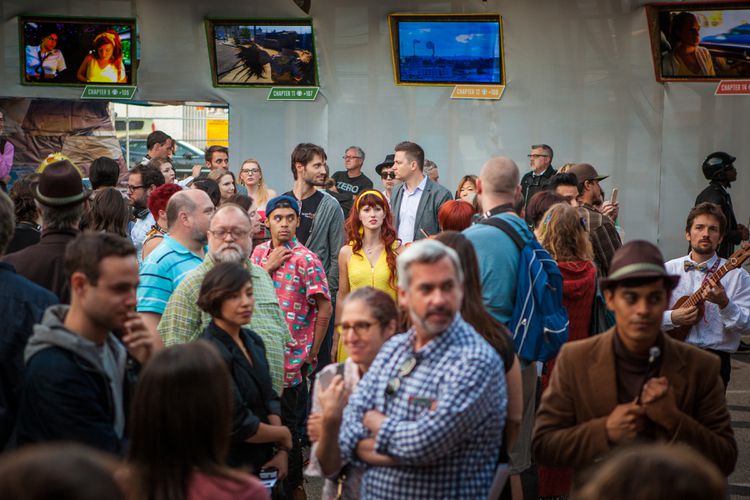
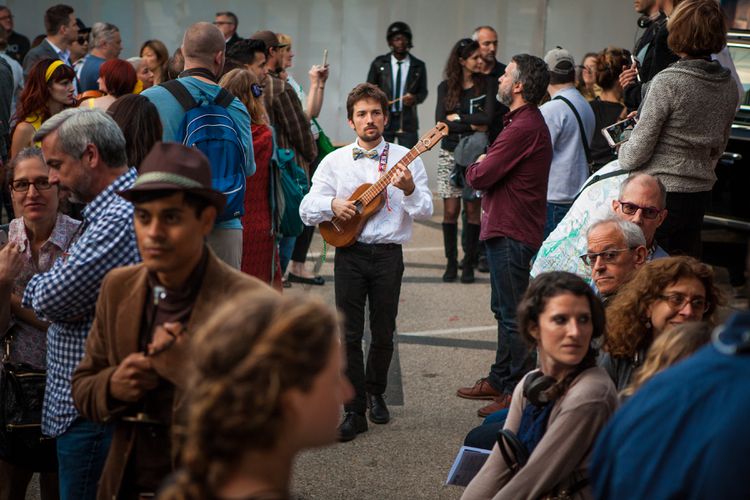

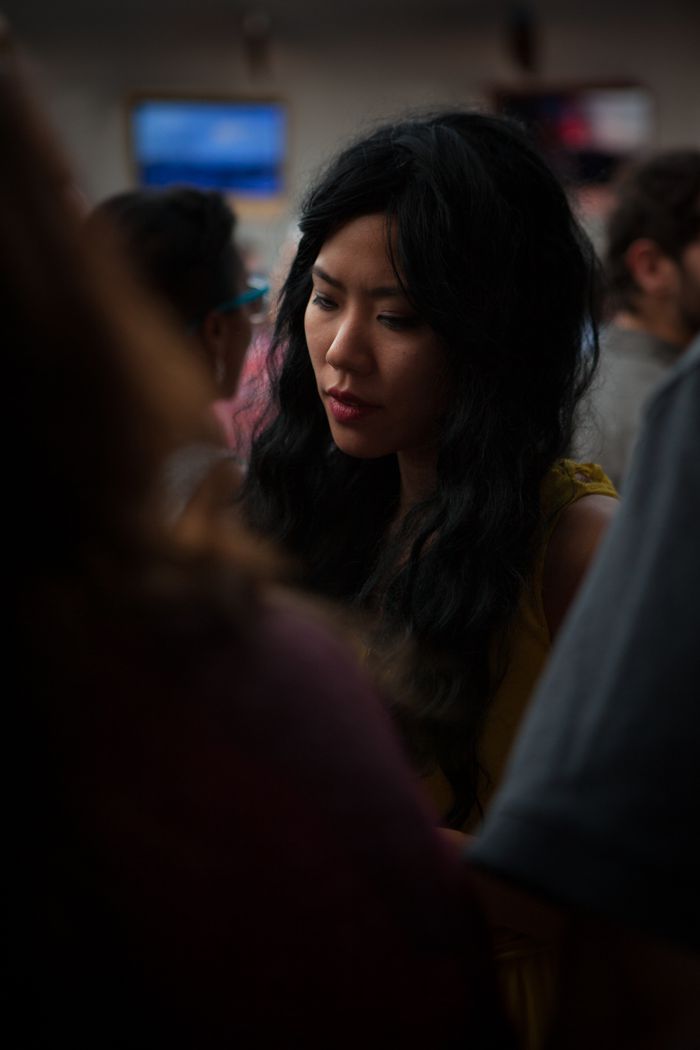
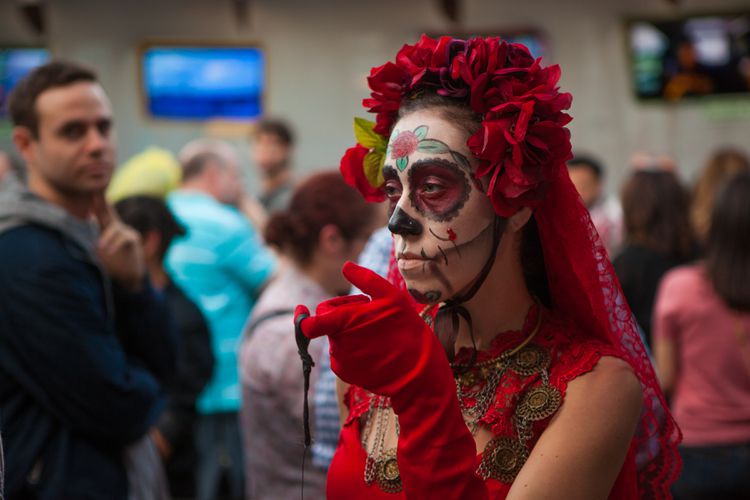
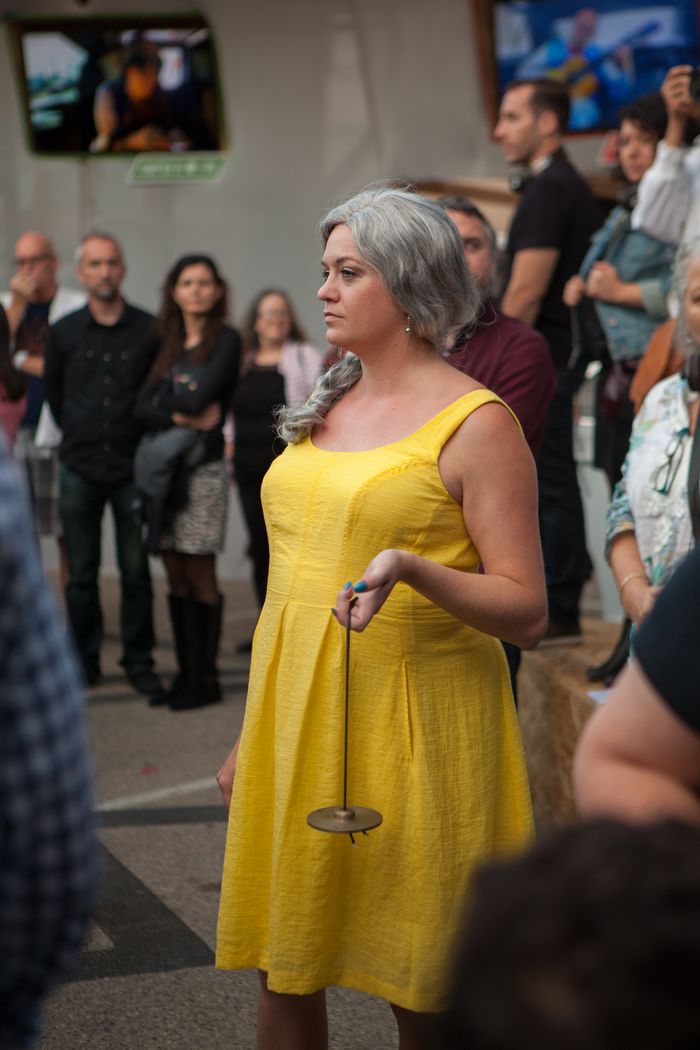
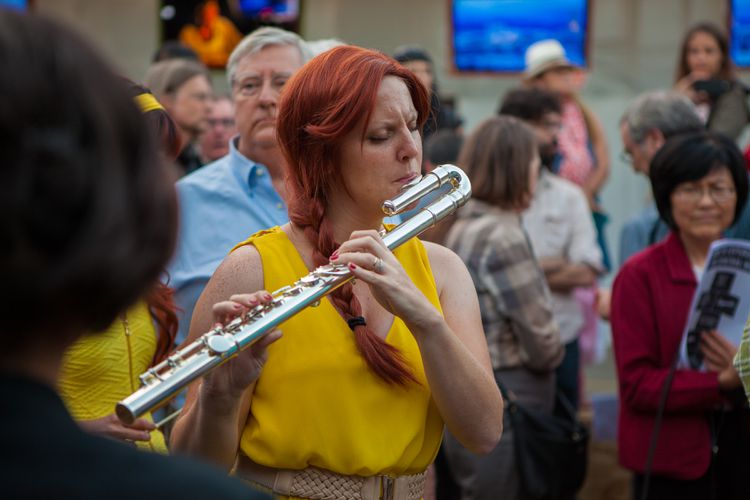
To Find the Center
Excerpt from the Hopscotch album, Track 20. Composer, Andrew Norman
The Finale is uplifting in a way. Jane Stephens Rosenthal wrote the libretto to combine the daily actions that make up our lives, interspersed with some more metaphysical ideas.
So this very disparate, sometimes lonely, sometimes scary, sometimes exuberant ride that had been happening in individual cars suddenly converged and made one circle - made a center.
Still needing to go to the market,
to change the sheets,
to do the dishes,
to feed the cat,
to cut the roses,
to gather up the leaves.
To get the transmission looked at,
to get the hair trimmed,
to listen to the messages,
to return the phone call,
to shave,
to finish the book,
to go for a run,
to turn the phone off at night,
to cook the chicken,
to steam the broccoli,
to turn on the rice.
To wash out the coffee pot,
to go to the meeting,
to find the center
Iterations of Lucha, Jameson and Orlando, portrayed at multiple stages of life, from 15 years-old to an elderly woman, came together in this temporary center we created at SCI-Arc.
To make the date,
to remember the present,
to not forget everyone’s names,
to close the windows,
to lock the doors,
to pray,
to get the mail.
To find the center…
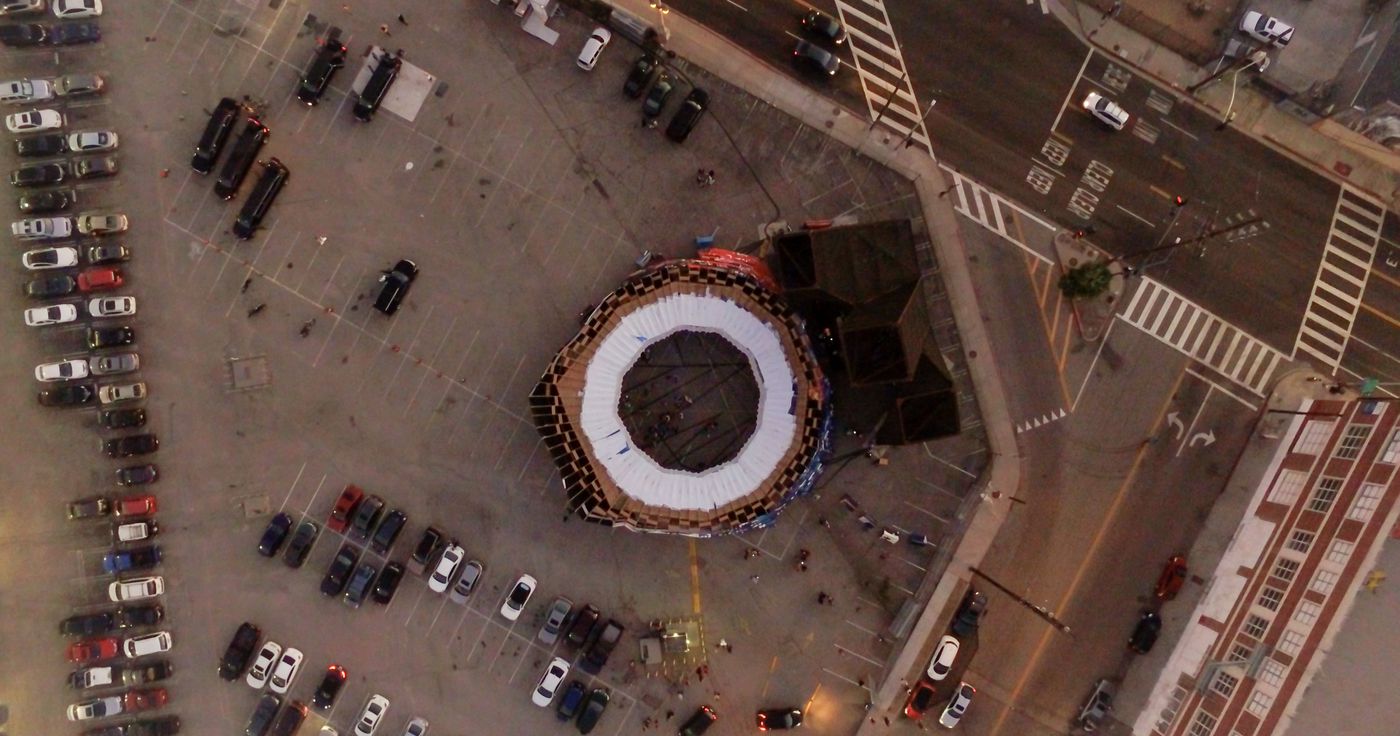
The Central Hub also realized the piece’s themes of simultaneity and the search for a center – geographically and spiritually.
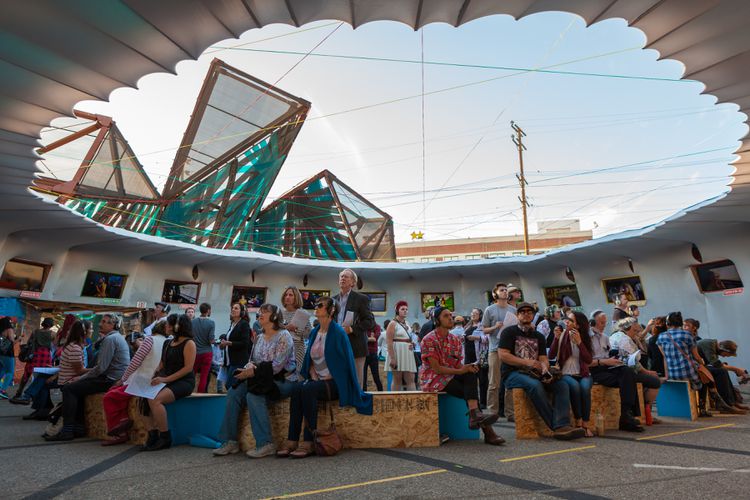
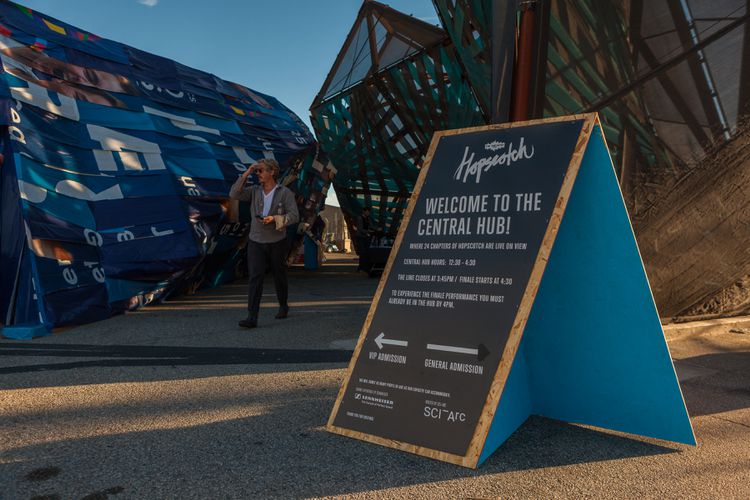
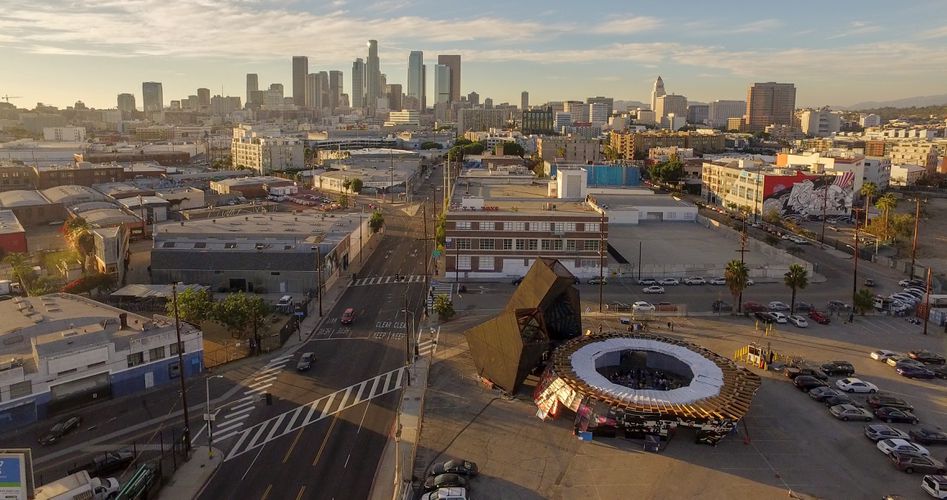
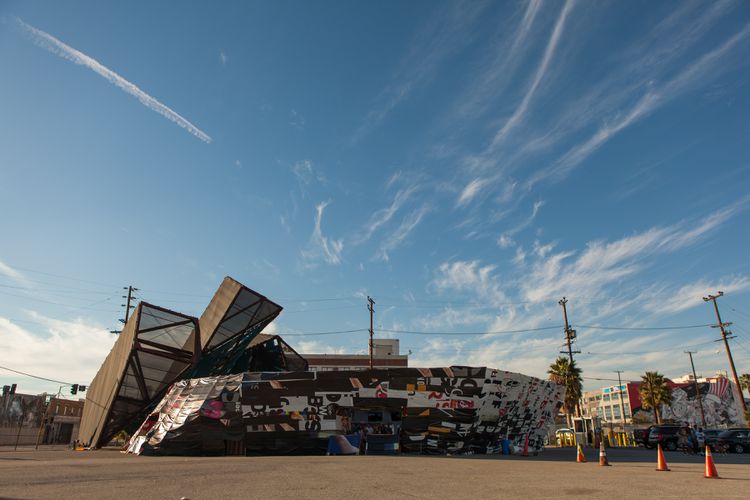

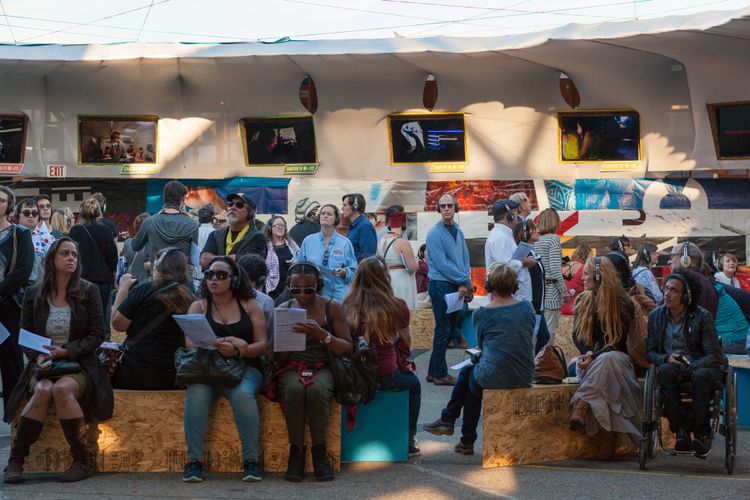
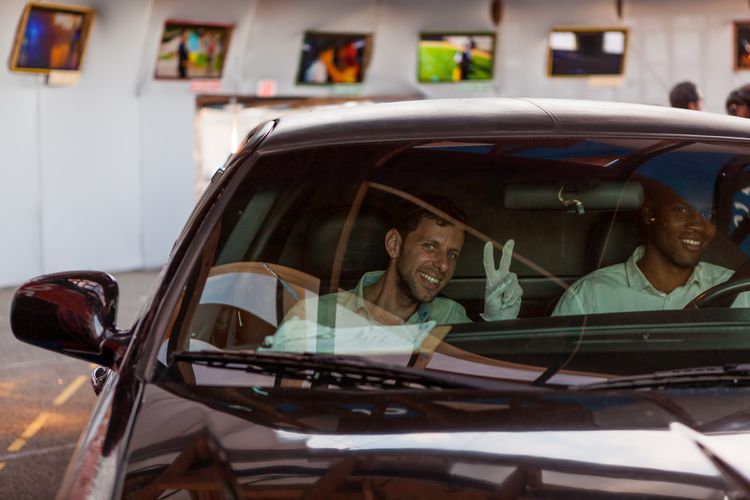
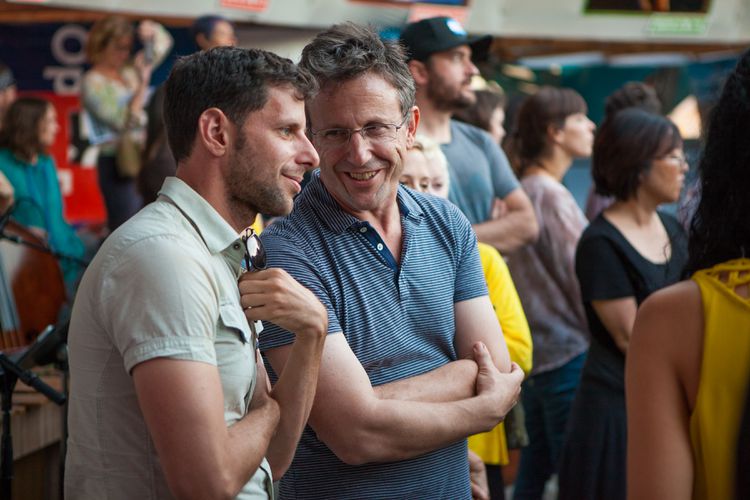
We built the hub with wood and vinyl. The outer casing was made from recycled billboards in homage to the street culture that drives so much of the Hopscotch narrative.
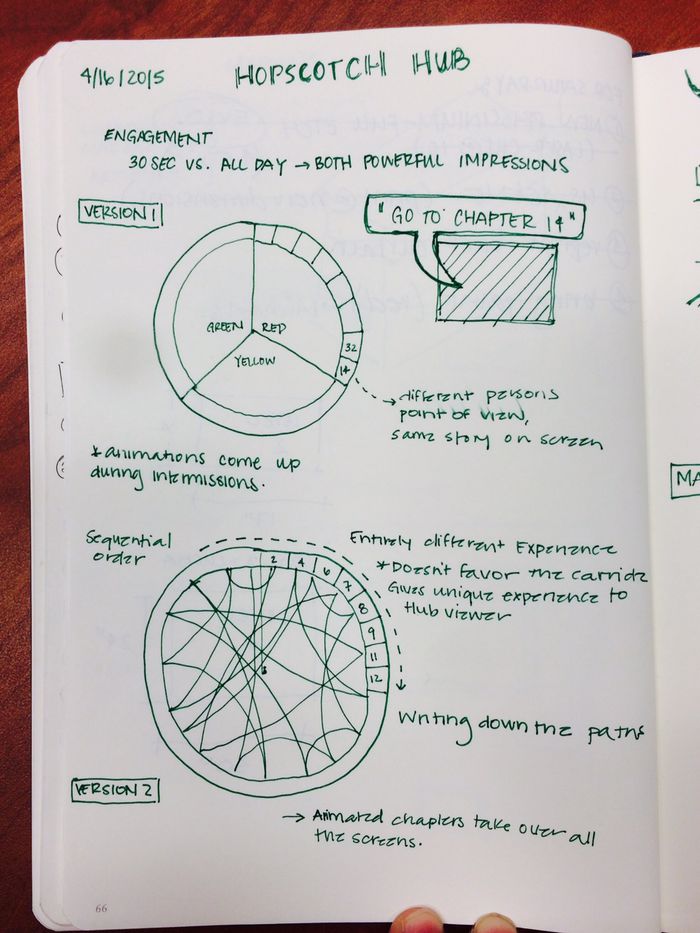
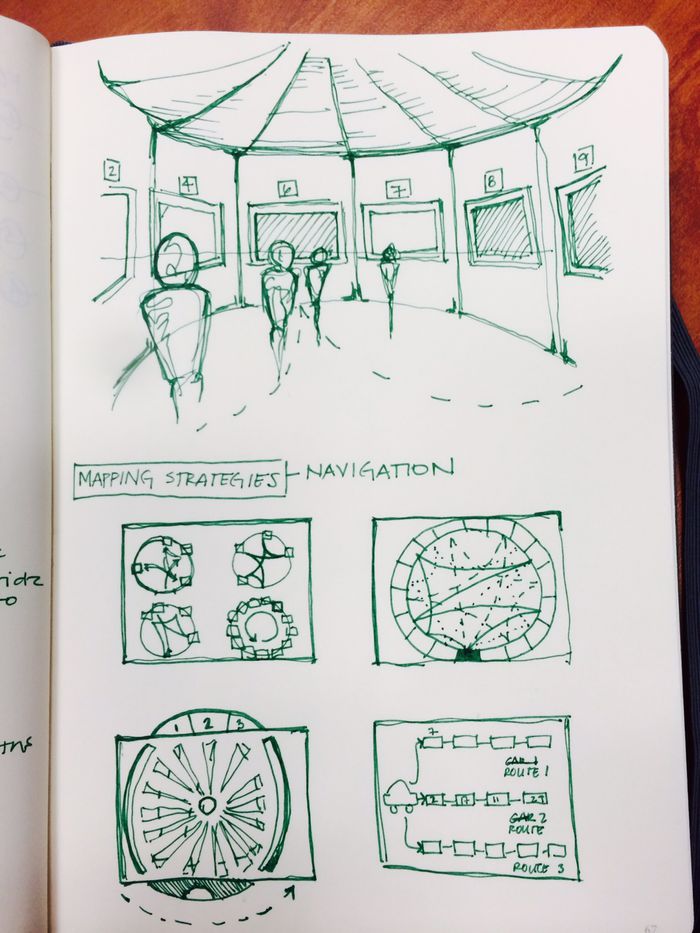
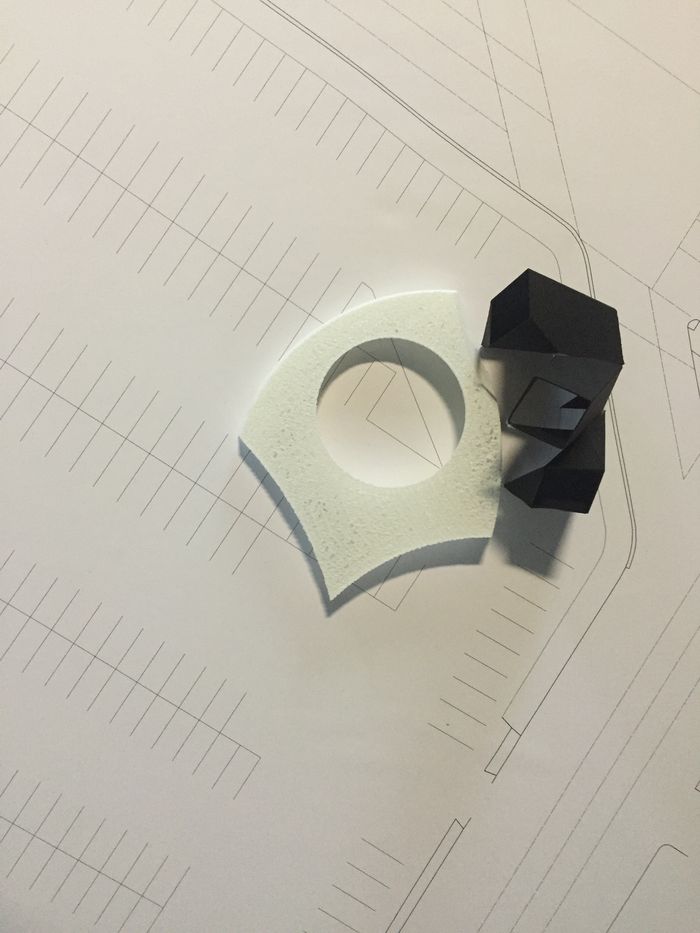
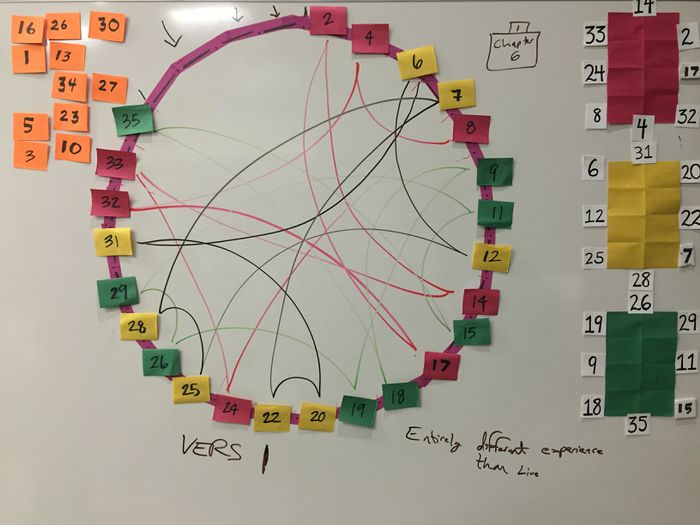
Inside the hub, 24 screens encircled the interior perimeter, each broadcasting a video of a chapter as it played out in real time, streaming from cameras mounted in the car.
For on-site performances, one audience member per chapter was given a camera and asked to be the videographer for that 10-minute duration.
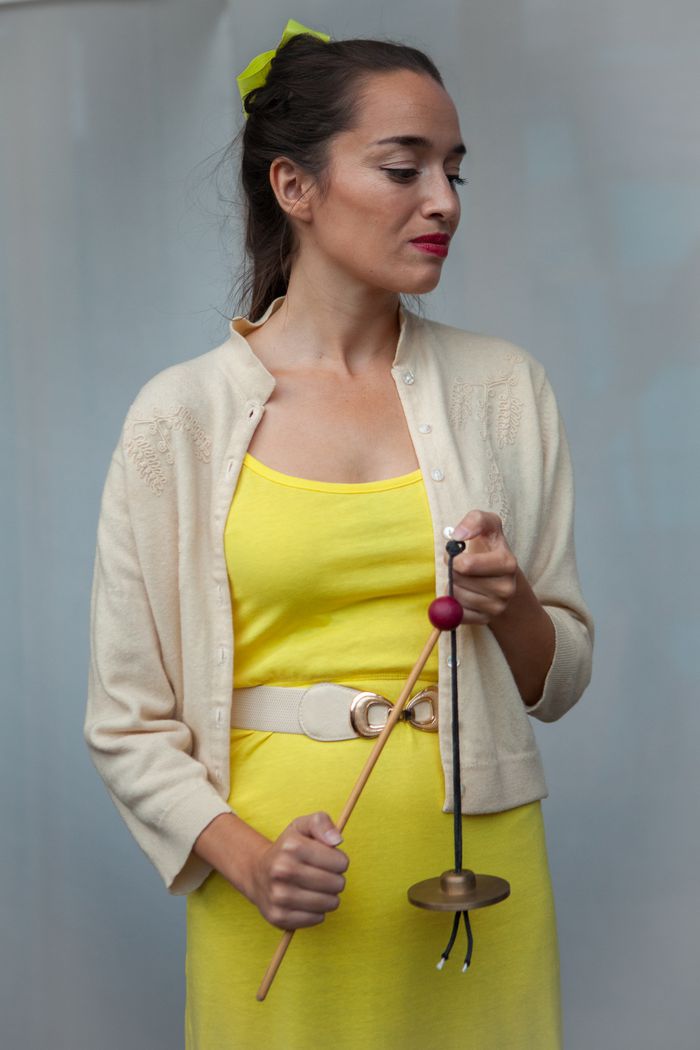
To go to the post office,
to read the paper,
to donate to the candidate,
to not worry.
The
Fall
Does
Come.
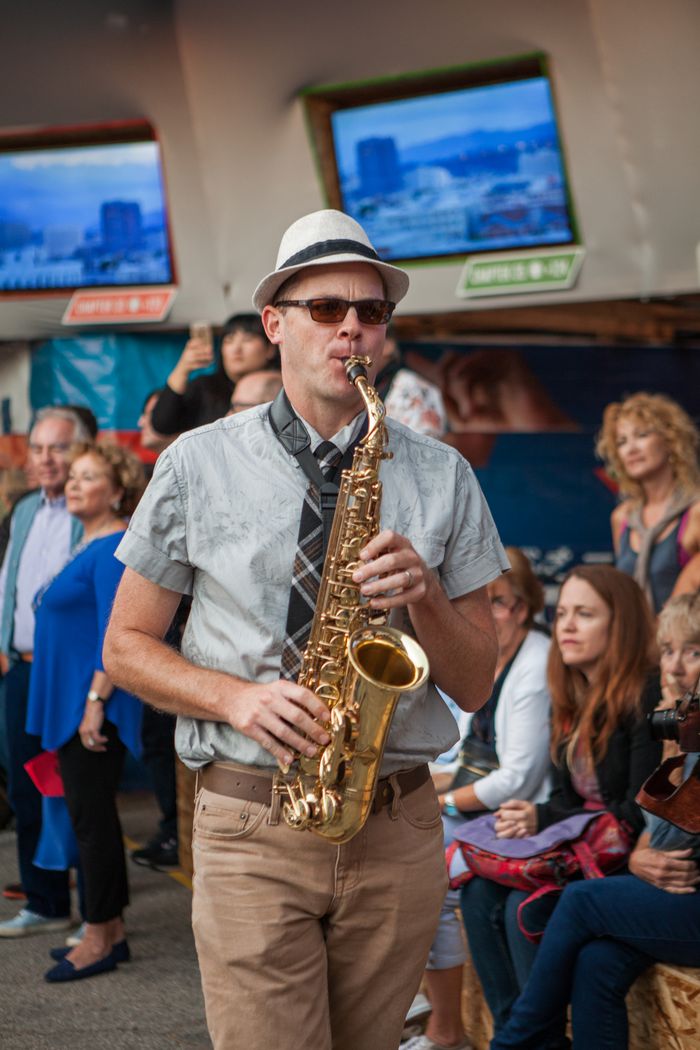



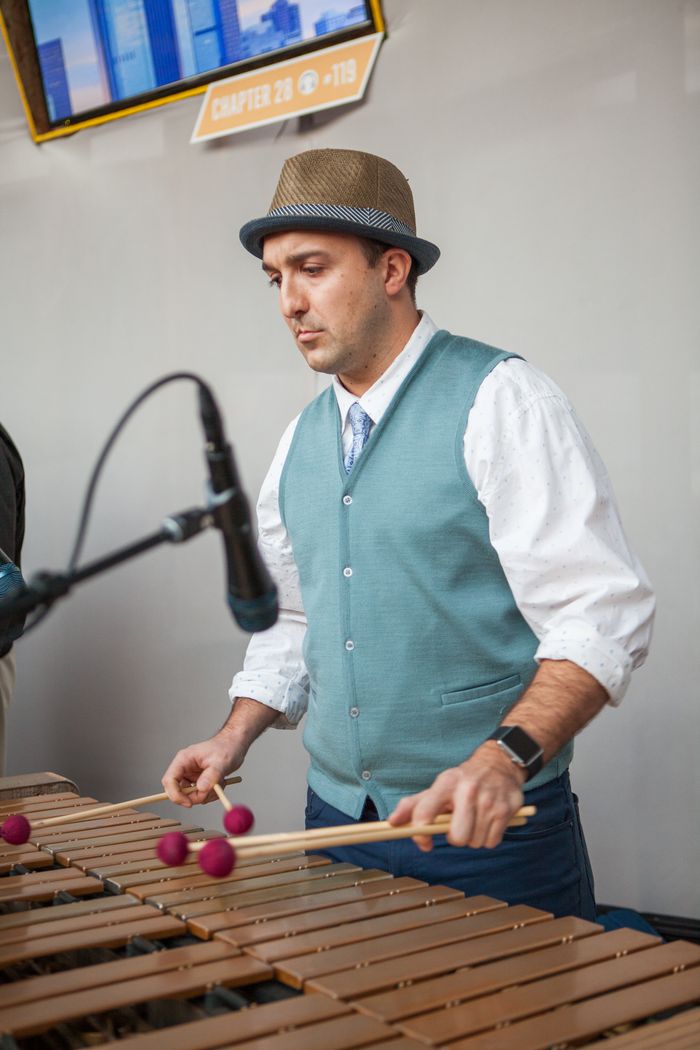
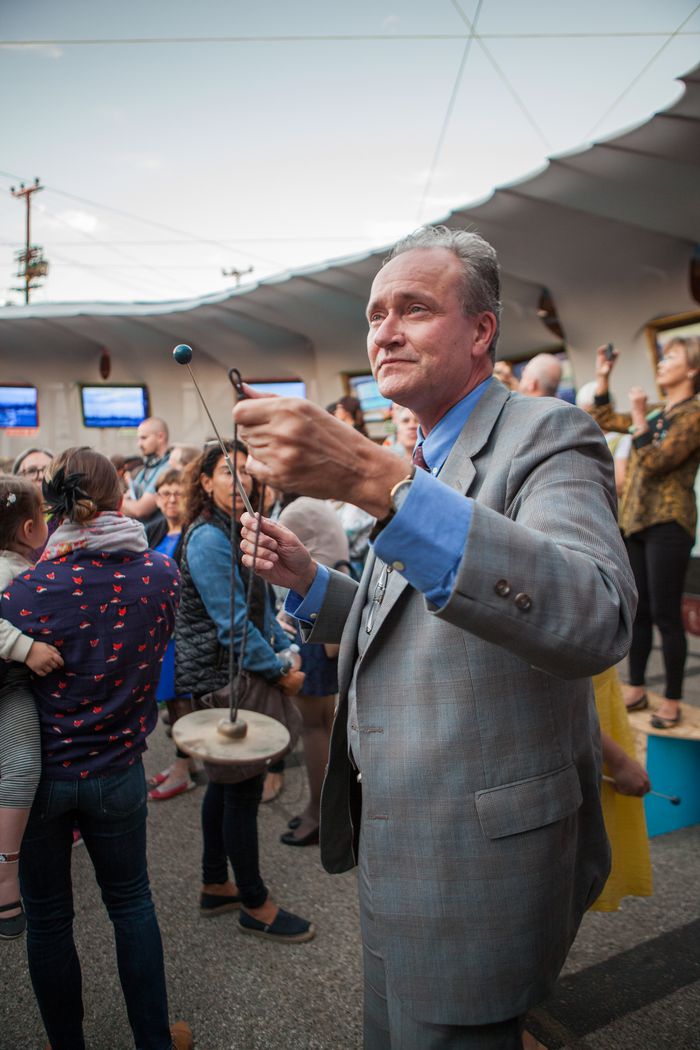
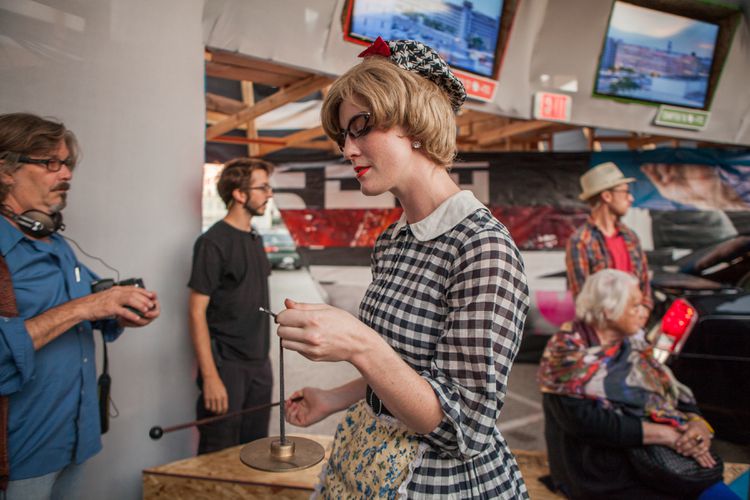
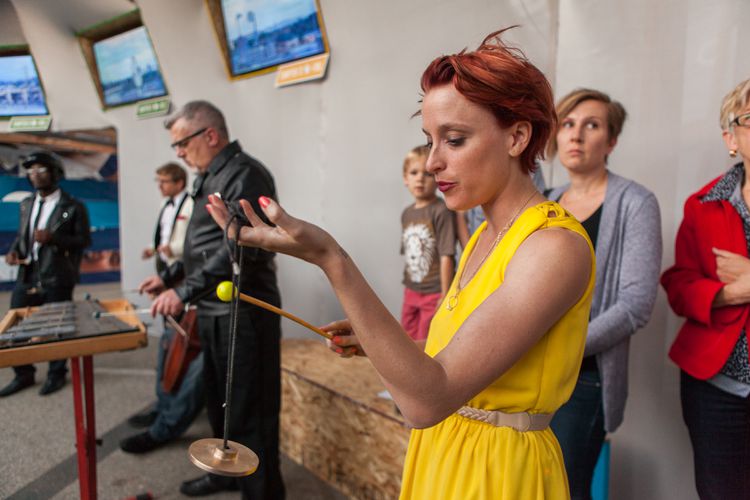

To change the light bulbs,
to learn how to value,
to not be shamed,
to take care of the raccoons,
to find the best plants for shade,
to text the sister-in-law,
to not think about babies,
to not think about the freeway,
to book the flights,
to not mention the money,
to call the sponsor,
to do the steps,
to clean the blender,
to give away the clothes,
to wipe down the baseboards,
to find the bathtub,
to balance the checkbook,
to pay the bills,
to check the bank account,
to cash the check,
there is a breeze.
To
Remember
The Scenery
Does Change.

